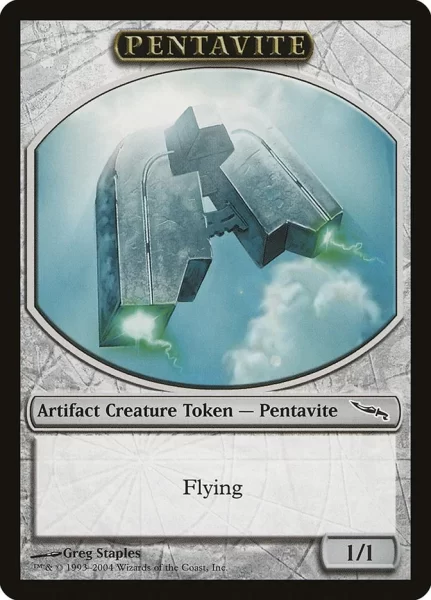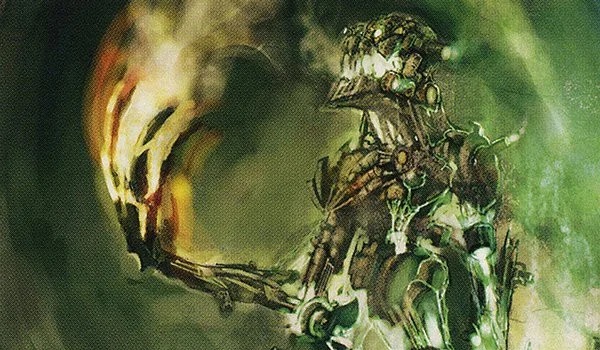Are you a Quiet Speculation member?
If not, now is a perfect time to join up! Our powerful tools, breaking-news analysis, and exclusive Discord channel will make sure you stay up to date and ahead of the curve.
Hello everyone, and welcome to a new installment of Magical Creatures, the series dealing with creatures unique to the Magic universe! If you missed it, the first piece of the series was an introduction to the concept of uniqueness and what I mean with that. As for the last one, it dealt with Kavu and Cephalid, two subtypes introduced respectively with the Invasion and with the Odyssey blocks.
I have anticipated it last week: the following block, namely Onslaught, contained no such creatures at all, despite being packed with creatures (especially Legions). It's still an interesting block, as it gave a crucial boost to the concept of tribal as we know it today. Thus, we'll quickly have a look at it before moving to the core of today's piece.
The Onlsaught Block
Launched in the end of 2002, Onslaught opened a new block, and the next year, Legions and Scourge would follow. It focused heavily on tribal cards, or ones for which creature types matter. The perfect scene for creating some new creatures! Well, it actually did add some, but none of them was unique to Magic. For instance, we had the first Mutant (Mistform Mutant) and Pangolin (although it was not to receive this subtype until many years later).
Typical (and not so typical) tribes
As for the rest, the Onslaught block was full of the typical creatures one would expect from a game based on the fantasy world. Goblins, Elves, Zombies, Clerics, and so on. Nothing for us to discuss, at least not in the present series... so instead, let's get to the heart of today's piece: Mirrodin!
Mirrodin's Supremacy
The Mirrodin block added no less than six new creature types unique to Magic: The Gathering. That's the highest number in the whole history of Magic. The only block coming close was Tempest, adding five unique subtypes. With a notable difference, though: Tempest's Soltari and Thalakos were not creature types back in the day, and were only canonized in the Grand Creature Type Update. On the contrary, all six of Mirrodin's new creatures were actual creature types right from the beginning.
This does not surprise us too much. After all, the plane that was once known as Mirrodin (and is now called New Phyrexia) is an artificial one, mostly made of metal. As such, it is home to many weird beings that were unseen before. Today it's different, since we came back to that plane with the Scars of Mirrodin block between 2010 and 2011, and are now familiar even with those strange creatures. Back in 2004, though, many new creature types needed to see light.
Indeed, we are counting six just because the focus of this series is on subtypes unique to Magic. If we had to count all new creature types, well, the number would be even higher! The six creatures we're talking about are Myr, Pentavite, Slith, Vedalken, Blinkmoth, and Bringer. Most of them come from the first set, Mirrodin itself, whereas the last two come from the next two expansions, Darksteel and Fifth Dawn.
Due to spatial concerns, we'll split the analysis over two pieces. In the present installment, let's discuss one big subtype (Myr) and two minor ones (Pentavite and Slith). Next week's piece will also deal with one major creature type (Vedalken) and two minor ones (Blinkmoth and Bringer).
Not Homunculus, Not Gnome... Myr!
Simplifying things, the concept of Myr is similar to that of the Homunculus, not unlike the Beeble (remember?), with the difference being that myrs are metal automatons. But then again, what isn't metallic on Mirrodin? Myrs are basically servitors, and were originally supposed to be Gnomes. The fact is that Brady Dommermuth, Creative Director at the time of Mirrodin, was not a huge fan of Gnomes, so he made up this new artifact race.
Myr mostly appeared in two limited periods of time during Magic's history: the Mirrodin block and the Scars of Mirrodin block. Some exceptions consist of Sarcomite Myr from Future Sight and a couple more from Modern Horizons (Parcel Myr and Myr Scrapling). Nothing exceptional.
Speaking of tribal, Myr was not complete until the arrival of Scars of Mirrodin, which introduced their first (and only) lord: Myr Galvanizer. That doesn't mean they are now a viable tribe for competitive play, but at least they gained something, right?
Notable Myrs in Competitive Play
As for competitive tournaments, though, the only Myr that saw regular play throughout the years was Myr Enforcer, and it definitely wasn't because of its subtype. If you played during the first Mirrodin age, you'll probably remember with terror the absolute and outrageous power of Affinity decks. And even if you didn't, you'll still know how it works, since it was also a contender in Extended and in Modern. It's no accident that today's Banned & Restricted list still includes Mirrodin's artifact lands... or that the Mirrodin Block format had 10 card banned from tournaments. No other block in Magic ever came close!
Other notable Myrs are Myr Retriever, a card that literally screams "combo," and Ichorclaw Myr, used during the Scars of Mirrodin era in Infect decks. The former managed to get a good result at Grand Prix Vienna, in 2008, piloted by Tomas Lebeda. And what's more, the reason why it performed so well was its synergy with another Myr, Myr Servitor. The latter even made it into the Top 8 of Pro Tour Nagoya 2011, this time in the hands of Gaudenis Vidugiris. Not bad, for a bunch of metallic servants!
Pentavite
We actually mentioned Pentavite a few months ago, in the piece about Atog and Tetravite, and it came to my mind because of its being a direct reference to Tetravite. Actually, the original card was Tetravus from Antiquities. As for Pentavus, it's a very similar creature, and even the name is a clear tribute. "Tetra" is Greek for the number 4, whereas "penta" indicates the number 5. And if you look at the two cards, you'll see that the former enters the battlefield with four +1/+1 counters, and the latter with five.

It's a weird creature type, that's for sure. Not a single creature was ever printed with that subtype, which means it only exists in the form of creature tokens. Or as the umpteenth creature type of Mistform Ultimus and all creatures with the changeling ability, of course...
Slith
The last creature type we're seeing today is Slith. Far from the huge number of Myr, but still more diverse than Pentavite, Slith appear on six cards. All of them come from Mirrodin, except for the last one, Arcbound Slith, introduced in the second expansion, Darksteel. Sliths are humanoid beings with faces similar to skulls, and seem to be made of metal or rock.
Their ability, although it might not seem obvious to newer players, is a tribute to Whirling Dervish, an old card from Legends. It's a weird set, as it includes six creatures instead of the usual five. The reason lies in the very nature of this block. Since artifacts are this crucial, even cycles that would normally be made of one card per color were joined by a sixth, colorless, artifact card.
What Makes a Good Card?
It goes without saying that neither Pentavus nor Slith were good enough to make the cut for competitive play. Myr, however, did. And the funny thing is that it made it for reasons totally unrelated to the creature type. Enforcer was a great 7-drop (actually more like a 2-drop, or total freebie) for Affinity. Retriever and Servitor worked very well together, and Ichorclaw was the perfect extra 2-drop for Mono Black Infect. So, the fact they were all Myr is just a coincidence?
Well, I hate to say it, but the answer is yes. Myr is a fantastic creature type from the point of view of visual design, if you ask me, and one of my all-time favourites. Nevertheless, the main reason why this subtype was seen on so many good cards is not the "Myr" part, but rather the "artifact" part. It's only natural that a colorless card, playable by any deck no matter its color restrictions, has an advantage right from the start against other colored cards.
Anyway, when such creature types are born, capable of being appreciated both by kitchen-table players and professionals, it's undoubtedly a great moment for Magic. What do you think? Can you name any other creatures with that kind of pedigree? Let me know in the comments or on Twitter, and stay tuned for the follow-up article, when we'll discuss Vedalken, Blinkmoth, and Bringer!





